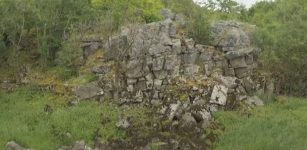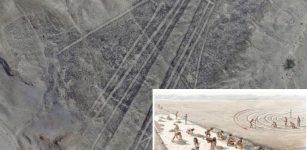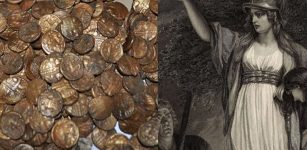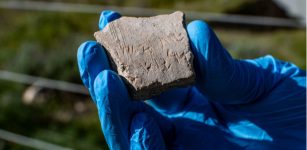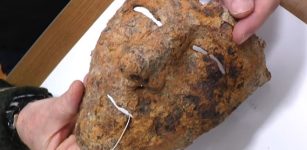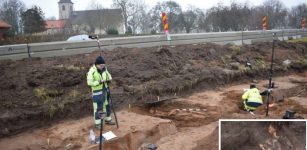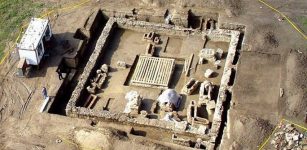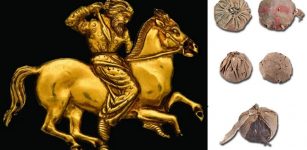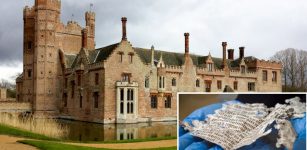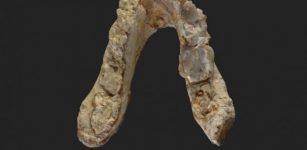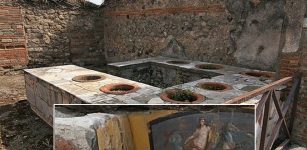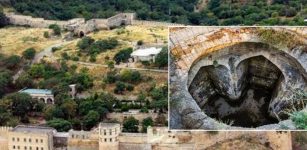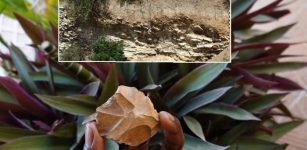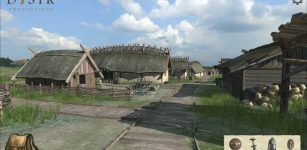Fascinating Artifacts Excavated At Harappan Site In Rajasthan, India
AncientPages.com - The recently excavated, Harappan site, dubbed by archaeologists as 4MSR, is located about 10 kilometers from Anupgarh town in Rajasthan.
Among many fascinating artifacts unearthed by archaeologists from ASI (Archaeological Survey of India) is a circular flat-bottomed terracotta vessel with a pronounced knob at the center, reports Frontline.
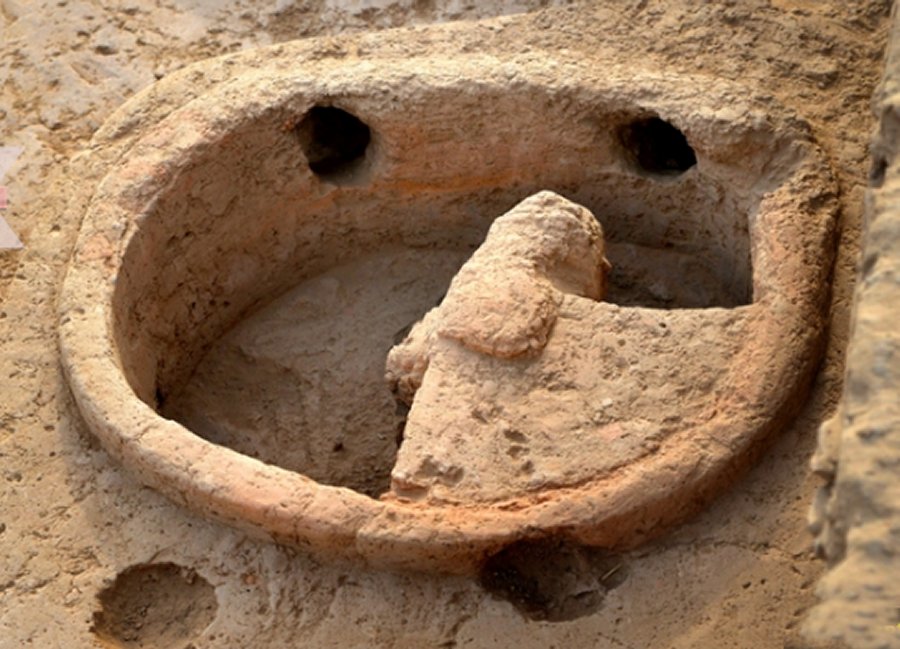
An oval furnace with a hub in the middle for keeping the crucible where artisans kept the copper ingots before fashioning them into artefacts. The furnace has holes for aeration and for inserting tuyeres to work up the flames. Photo:V.V. Krishnan
They found not one but two such vessels, but in the second one the knob had broken off.
According to Sanjay Kumar Manjul, director of the excavation for the 2017 field season in the area, this kind of vessel is a unique find, which probably represents a ritualistic vessel, perhaps an incense burner, or a massive dish that is placed on a stand.
Similar type of pot depictions have been found on seals from Harappan sites in India and Pakistan.
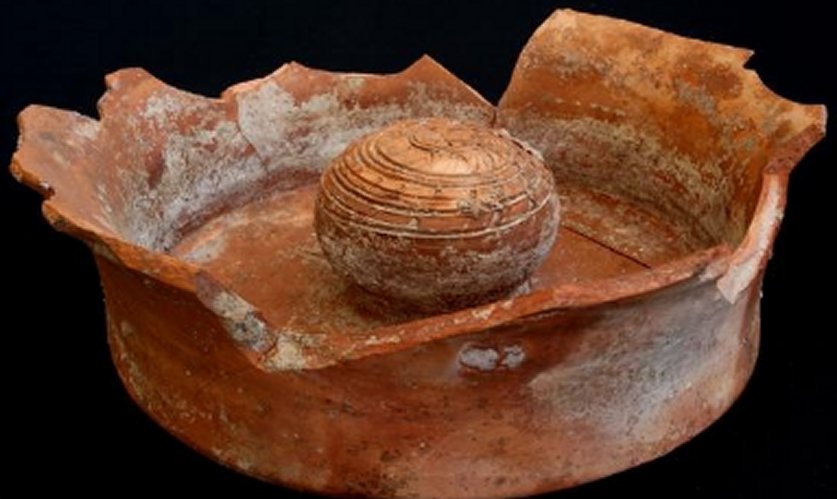
This terracotta vessel with a pronounced knob at the centre has engaged the attention of archaeologists as a "unique find" and is probably used in rituals or ceremonies. Similar vessels have been depicted on Harappan seals and copper plates. Photo:ASI
The vessel has been depicted on Harappan seals placed in front of a unicorn, and on copper plates along with a seated “yogi” with a horned headdress.
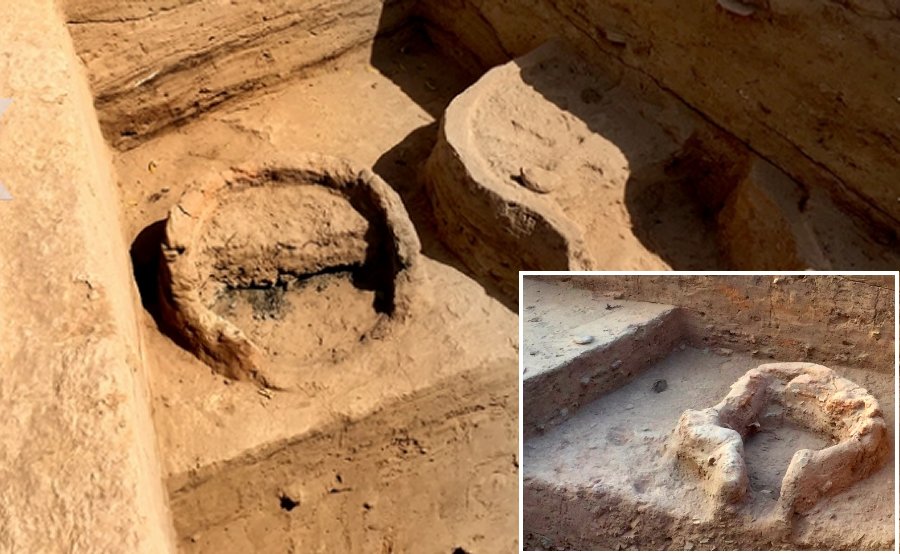
Left: A circular hearth with charcoal pieces and ash. Harappans made beads out of steatite, agate,
carnelian, lapis lazuli, and so on here. Right: A yoni-shaped furnace found at 4MSR. Photo: T.S. Subramanian.
Another exciting find was two tortoise shells amid charred bones of the tortoises. This suggested that tortoises formed an important part of the food of the Harappans who lived at 4MSR about 5,000 years ago.
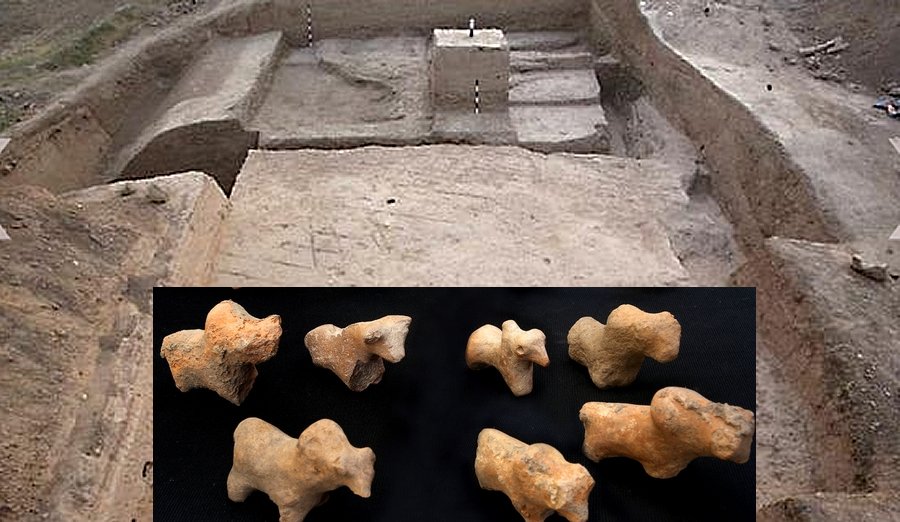
Above: A portion of the enclosure wall that has been excavated in different areas around the mound. The wall, made of mud bricks, is thought to run around the settlement, and this one is in the south-east corner; Below: Humped bulls, made of terracotta, found in the trenches at 4MSR. Photo: ASI
Among the artifacts discovered were seals; fragments of gold foils and gold beads; miniature beakers probably used for measuring liquids; painted pottery; perforated jars; goblets and storage pots; beads made of steatite, agate, jasper, carnelian, lapis lazuli, and other semi-precious stones; earrings; fish hooks; spear-heads and arrowheads made of copper; bangles made of conch shells; and terracotta figurines.
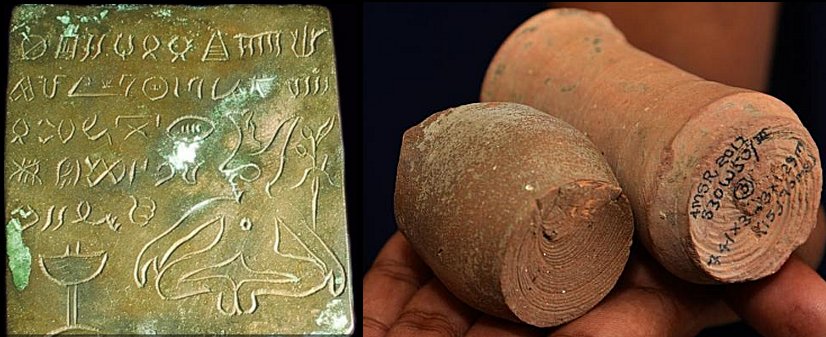
Left: The copper plate with the engraving of the knobbed ceremonial vessel similar to the one found in the 2017 round of excavations. Photo: Vasant Shinde; Right: Harappan beakers for measuring liquids. Photo: V.V. Krishnan
The trenches also yielded hundreds of terracotta cakes in shapes that ranged from oblong (popular among archaeologists as idli-shaped) to triangle and similar to a clenched fist (mushtika). They also yielded 10 pieces of weights made of banded chert stones.
See also:
Mysterious Mohenjo Daro Was Home To An Unknown Advanced Civilization Far Ahead Of Its Time
Dwarka – Pre-Harappan City That Could Rewrite The History Of The World
“At the moment, we can safely say that the site was extant from circa 4000 BC to 2000 BC. We are awaiting more dates. Then we can say whether we can go beyond these dates,” Manjul said.
The excavated site belongs to the Mature Harappan (also called Mature Indus Period) dated to 2600 - 2050 BC, and late Mature Harappan phases. This period is contemporary with starts about the same time as the Sumerian Early Dynastic III (Royal burials at Ur) and it continues to the collapse of the Ur III state (Ur-Nammu's military union of Sumer, the last independent Sumerian state).
“We are trying to understand the paleoclimate of this region with the evidence provided by the archaeological finds and the settlement pattern of Harappan sites in this region,” Manjul said.
AncientPages.com


